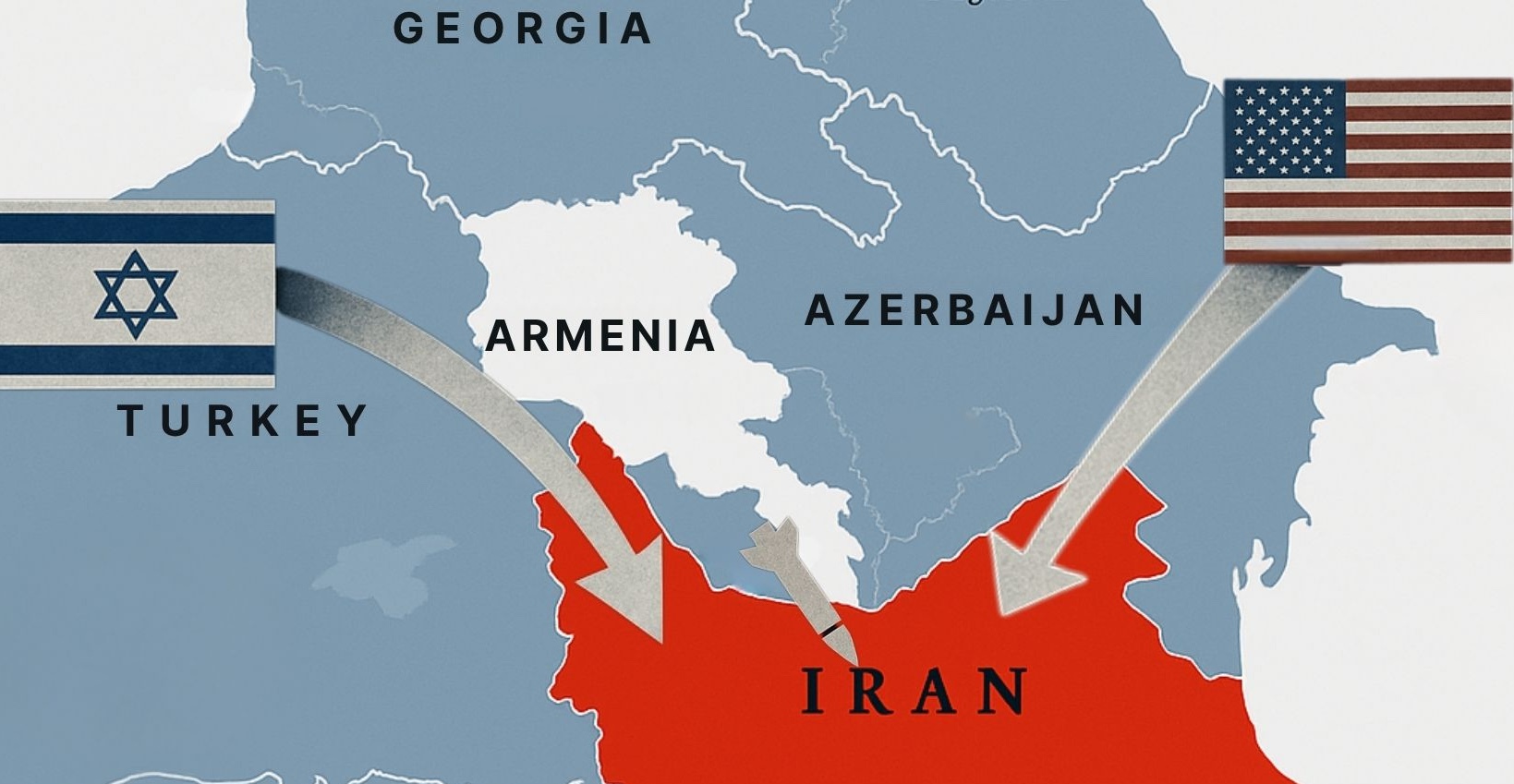Assessment of the challenges and consequences for Yerevan following the Israeli-Iranian confrontation

The recent 12-day war between Israel and Iran has profoundly disrupted the Middle East’s strategic balance, with significant implications for Armenia’s interests in the South Caucasus. In a recent analysis published by EVN Report, Nerses Kopalyan explores the significant impact of this confrontation in detail. Initially launched by Israel to neutralise Iran’s nuclear facilities, the operation quickly took on decisive proportions when the United States intervened on 22 June, precision-bombing Iran’s main nuclear centres in Fordo, Isfahan and Natanz. The operation, carried out with B-52 bombers and Tomahawk missiles, exposed Tehran to unprecedented strategic vulnerability.
These events are upsetting the regional balance. Iran, a pillar of the ‘Shiite Crescent,’ is seeing its positions crumble: the defeat of Hezbollah in Lebanon, the fall of the Assad regime in Syria, and the collapse of its militia networks. This rout is pushing Tehran to rethink its security strategy. According to Nerses Kopalyan, faced with this weakening, the Iranian regime will accelerate its nuclear programme, considering the atomic weapon as its last resort for survival against Israel and the United States.
For Armenia, this situation creates a series of complex and worrying dilemmas. While the country is trying to diversify its security and foreign policy partners, Iran is a crucial logistical and economic corridor for Armenia, a landlocked country isolated by often hostile neighbours. The prolonged escalation of tensions between Israel, the United States and Iran would have dramatic consequences, exacerbating Yerevan’s isolation and significantly increasing the risk of humanitarian and economic crises on its southern border.
Faced with this complex challenge, Armenia has been forced to adopt a subtle policy of ‘strategic ambiguity’. This doctrine involves deliberately maintaining an ambiguous diplomatic position on real intentions or explicit preferences in regional conflict situations. Unlike major powers, which use this approach to manipulate strategic uncertainty, small states such as Armenia see it as a means of avoiding direct confrontation while preserving their essential bilateral relations. More specifically, Yerevan opts for ‘situational ambiguity,’ openly supporting general principles such as peace and regional stability, while refusing to take sides explicitly or directly.
This strategy should enable Armenia to protect itself from direct involvement in conflicts while reducing the risk of breaking with its essential strategic allies. Strategic ambiguity is therefore not simply a tactical preference, but becomes an unavoidable requirement dictated by political and geostrategic realism.
In the coming months, as the region could see a new escalation of tensions between Israel, the United States and Iran, Yerevan must, according to Nerses Kopalyan, imperatively preserve this balanced diplomatic stance. Armenia must carefully avoid taking any definitive position, favouring a pragmatic and measured approach aimed at minimising its potential losses.
Ultimately, strategic ambiguity is proving to be the cornerstone of a pragmatic Armenian foreign policy, in tune with the changing realities of a deeply unstable Middle East.
